Supplemental Irrigation: A Promising Climate-resilience Practice for Sustainable Dryland Agriculture

Authors:
Around 80 % of the world’s agricultural land is rainfed, and contributes to at least two-thirds of global food production. About 41 % of the Earth’s land area is classi- fied as dryland (ISPC 2015), wherein the farming system is characterized by approximately 300–500 mm of annual rainfall, much of which falls in winter and spring (Hyman et al. 2008). The low rainfall, which is not only insufficient but irregular, constitutes a major challenge to profitable farming in dry areas. Nevertheless, local populations depend on these lands for producing food. Drylands are inhabited by more than two billion people worldwide.
Since water is the most limiting factor for agricultural production, the primary problem is the most effective means of storing natural precipitation in the soil and how to retain this water until needed by the plants. In drylands, water received as rain or snow can easily be lost before it can be used by a crop (Inanaga et al. 2005). Rainfall amounts and distribution during the crop season are suboptimal. Normally, crop evapotranspiration exceeds the 300–500 mm seasonal rainfall and the irregular rainfall results in periods of drought which stress crops and cause substantial yield losses. In the West Asia and North Africa (WANA) region, wheat yields are less than 2 t ha−1, one-third of its potential (Oweis and Hachum 2012).
Supplemental irrigation (SI) has been a promising practice to overcome the con- straints outlined above. SI is defined as the addition of limited amounts of water to essentially rainfed crops to improve and stabilize yields when rainfall fails to pro- vide sufficient moisture for normal plant growth (Oweis and Hachum 2012). SI is an effective response to alleviating the adverse effects of soil moisture stress on the yield of rainfed crops during dry spells. A shortage of soil moisture in rainfed areas often occurs during the most sensitive stages of crop growth (flowering and grain filling). As a result, rainfed crop growth is poor and yield is consequently low. Supplemental irrigation, especially during critical crop growth stages, can improve crop yield and water productivity. Substantial increases in rainfed crop yields, in response to the application of relatively small amounts of water, have been observed (Oweis and Hachum 2003). When rainfall is low, more water is needed, but the response is greater, and yield increases are remarkable even when rainfall is as high as 500 mm (Oweis and Hachum 2012).
Unlike full irrigation, the timing and amount of SI cannot be determined in advance given the rainfall variability. SI in rainfed areas is based on the following three basic aspects (Oweis and Hachum 2012):
1. Water is applied to a rainfed crop that would normally produce some yield with- out irrigation.
2. Since rainfall is the principal source of water for rainfed crops, SI is only applied when the rainfall fails to provide essential moisture for improved and stable production.
3. The amount and timing of SI are optimally scheduled not to provide moisture stress-free conditions throughout the growing season, but rather to ensure that a minimum amount of water is available during the critical stages of crop growth that would permit optimal yield. SI can be applied to field crops, fruit trees and even landscape areas.
In this chapter, we discuss the case studies from different dryland countries in the
WANA region where supplemental irrigation successfully increased land and water productivity.
